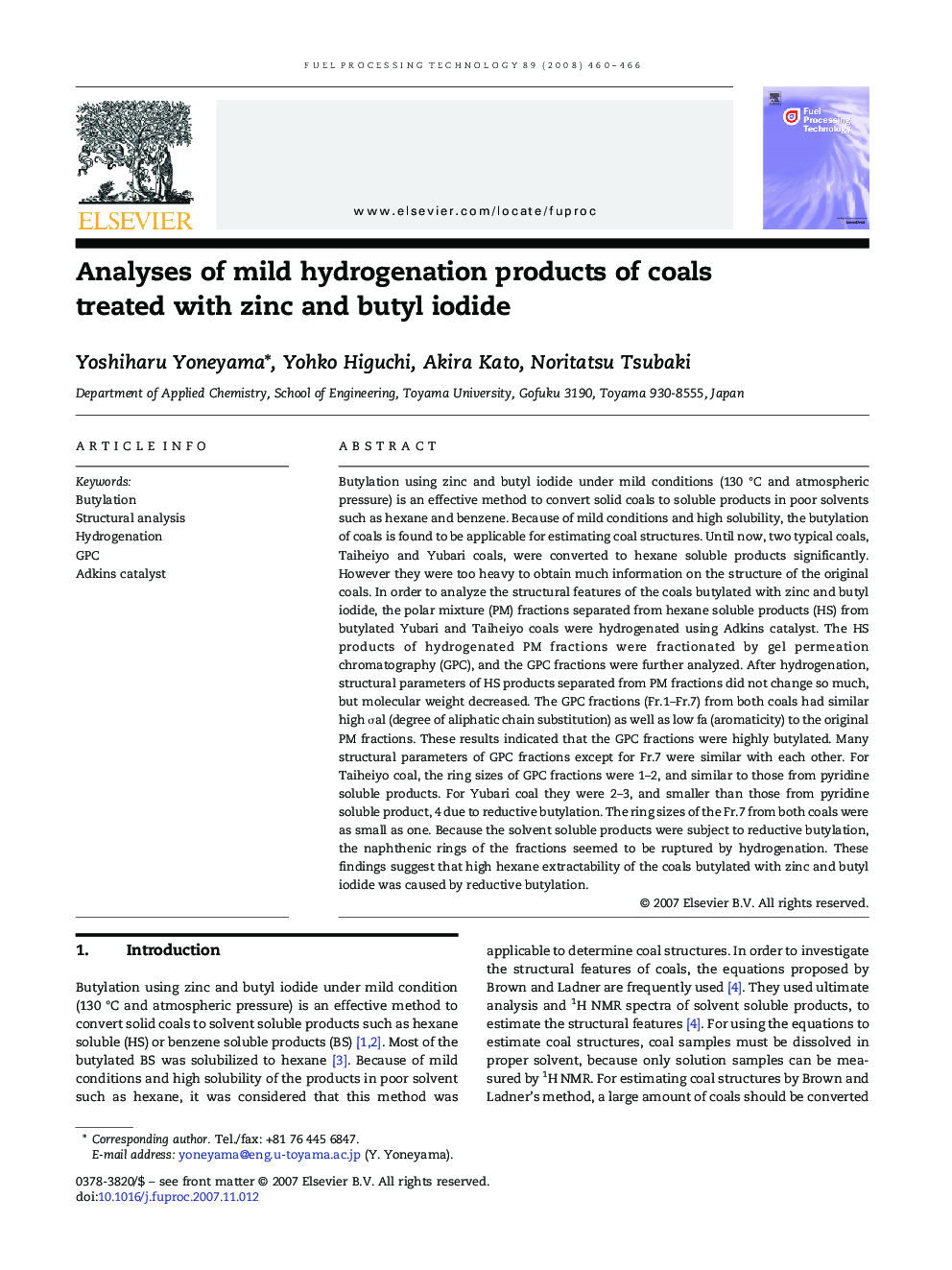| Article ID | Journal | Published Year | Pages | File Type |
|---|---|---|---|---|
| 211567 | Fuel Processing Technology | 2008 | 7 Pages |
Butylation using zinc and butyl iodide under mild conditions (130 °C and atmospheric pressure) is an effective method to convert solid coals to soluble products in poor solvents such as hexane and benzene. Because of mild conditions and high solubility, the butylation of coals is found to be applicable for estimating coal structures. Until now, two typical coals, Taiheiyo and Yubari coals, were converted to hexane soluble products significantly. However they were too heavy to obtain much information on the structure of the original coals. In order to analyze the structural features of the coals butylated with zinc and butyl iodide, the polar mixture (PM) fractions separated from hexane soluble products (HS) from butylated Yubari and Taiheiyo coals were hydrogenated using Adkins catalyst. The HS products of hydrogenated PM fractions were fractionated by gel permeation chromatography (GPC), and the GPC fractions were further analyzed. After hydrogenation, structural parameters of HS products separated from PM fractions did not change so much, but molecular weight decreased. The GPC fractions (Fr.1–Fr.7) from both coals had similar high σal (degree of aliphatic chain substitution) as well as low fa (aromaticity) to the original PM fractions. These results indicated that the GPC fractions were highly butylated. Many structural parameters of GPC fractions except for Fr.7 were similar with each other. For Taiheiyo coal, the ring sizes of GPC fractions were 1–2, and similar to those from pyridine soluble products. For Yubari coal they were 2–3, and smaller than those from pyridine soluble product, 4 due to reductive butylation. The ring sizes of the Fr.7 from both coals were as small as one. Because the solvent soluble products were subject to reductive butylation, the naphthenic rings of the fractions seemed to be ruptured by hydrogenation. These findings suggest that high hexane extractability of the coals butylated with zinc and butyl iodide was caused by reductive butylation.
